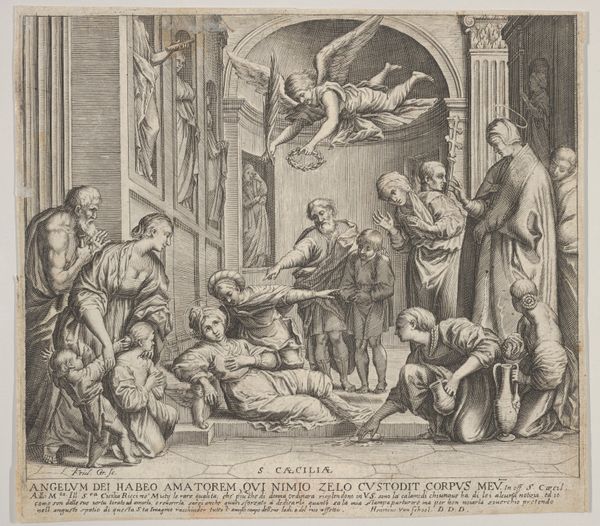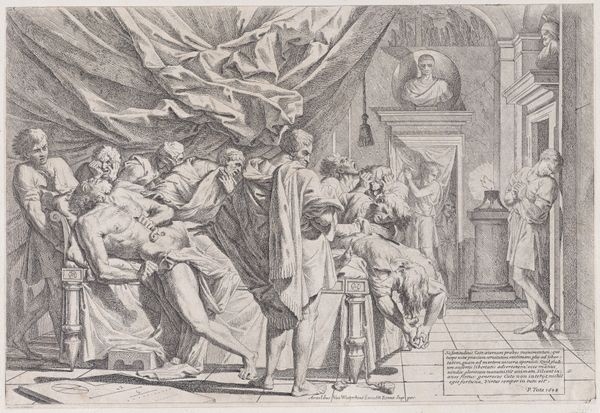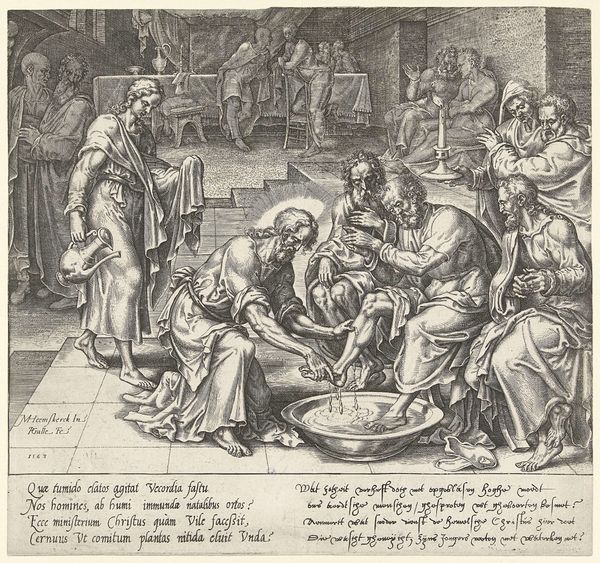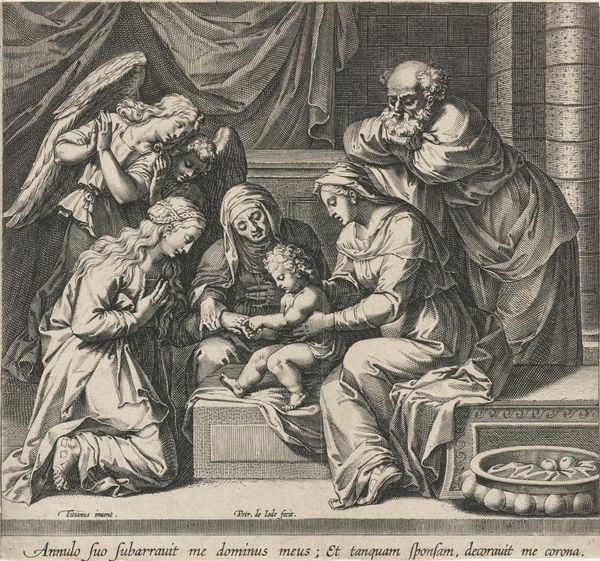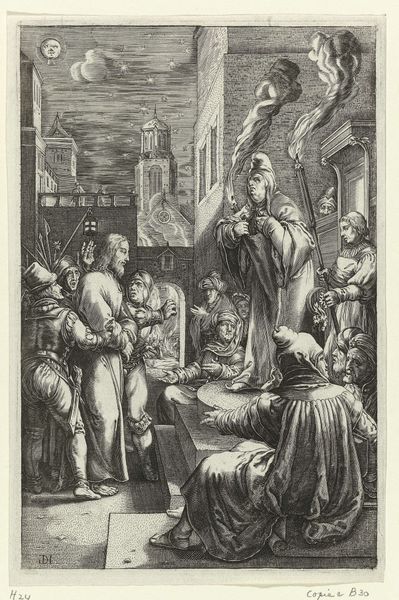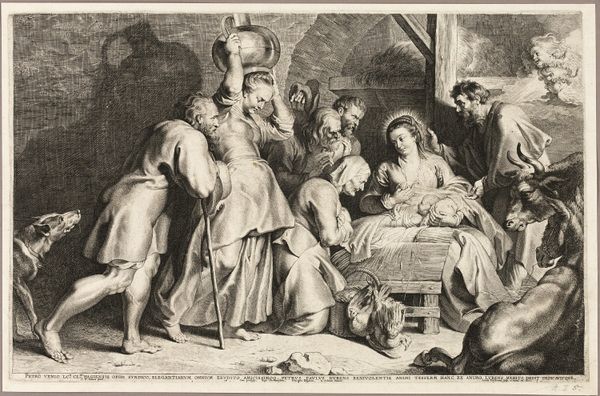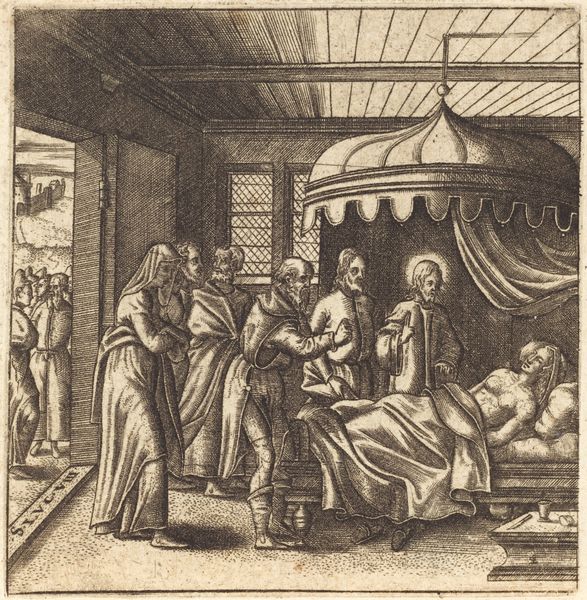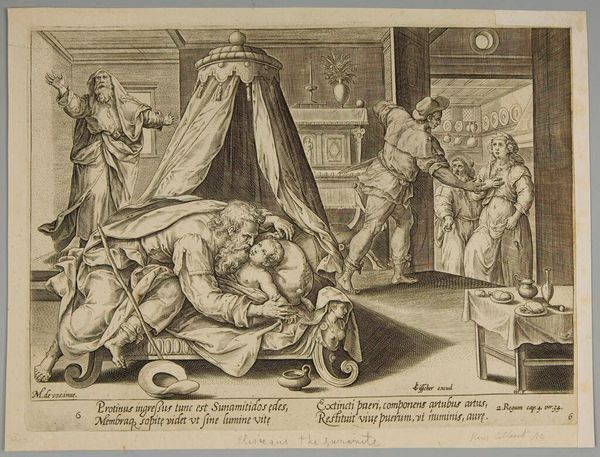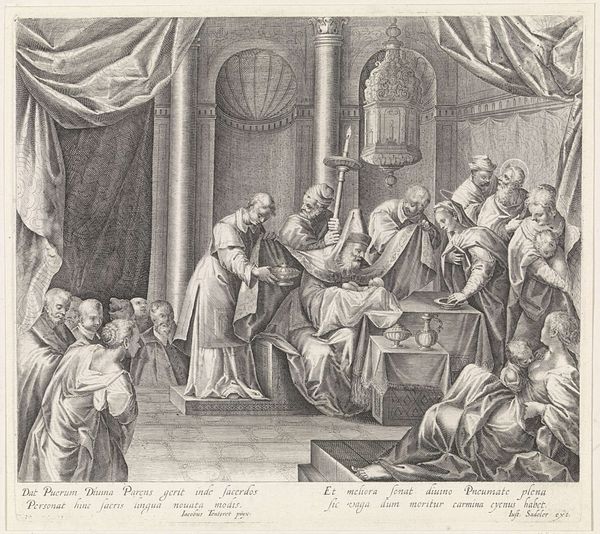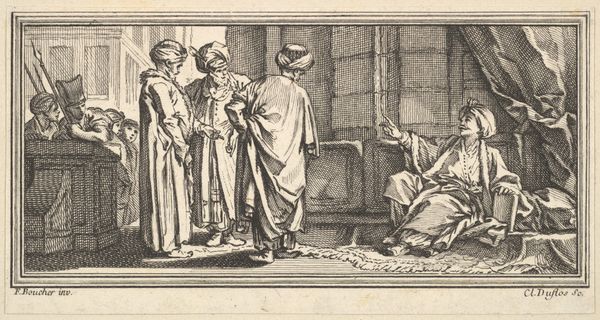
print, engraving
#
baroque
# print
#
genre-painting
#
history-painting
#
engraving
Dimensions: plate: 11 x 15 cm (4 5/16 x 5 7/8 in.) sheet: 20 x 25 cm (7 7/8 x 9 13/16 in.)
Copyright: National Gallery of Art: CC0 1.0
Editor: Here we have Conrad Meyer's engraving, "Caring for the Ill". There's a striking density to the composition, it almost feels claustrophobic with so many figures crammed into the scene. What strikes you most about the visual arrangement? Curator: The interplay between the receding planes creates a dynamic tension. Note how Meyer employs linear perspective to guide the eye deeper into the scene, yet the multitude of figures disrupts a smooth transition. The stark contrast of light and shadow, achieved through the engraving technique, serves not just to model forms but to accentuate the emotional weightiness. Observe the architectural framework; the window placement seems almost unnatural as if to impose structure and control, even on this rather chaotic image. Editor: You mention the chaotic image, but how do the internal images affect the overall work? Curator: Excellent question. It is not immediately apparent how important they are! Notice how the subjects repeat themselves in the tapestries, each repeating action adds another layer of texture within the work. The lines may be faint, but there is a mirroring effect happening that enhances the emotional intensity by reiterating the ideas of caring for the body and soul. Editor: So, would you say that the layering and repetition of form contribute to the engraving's narrative depth, despite the seemingly crowded composition? Curator: Precisely! It exemplifies the baroque tendency to engage the viewer emotionally and intellectually. It challenges one to discover these inner meanings. Editor: I had never thought about the tapestries, but now I am drawn into it. Thanks so much. Curator: You're welcome. Now I also appreciate it differently.
Comments
No comments
Be the first to comment and join the conversation on the ultimate creative platform.


